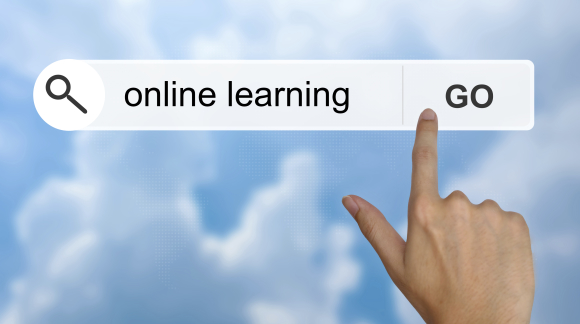About Online and Distance Learning

Online vs. Distance Learning
Years ago, the option to earn a degree online did not exist. Today, virtual learning is a reality, with children as young as five years old earning an education from their own homes via the Internet.
Distance learning is a type of online learning:
Online learning – Engaging in educational activities that result in a certificate or degree through the use of virtual materials and resources on the Internet.
Distance learning – Also known as distance education, distance learning is the use of the Internet to participate in classroom programs from institutions located in another geographical area. Distance learning is most commonly used in higher education.
The Benefits of Virtual Classrooms
We are becoming a more technologically savvy society. Children can operate a cell phone as young as two years old and robots can be engineered to care for the elderly.
With children becoming acclimated to technology and the Internet at such a young age, virtual schools are growing in popularity. Unlike a teacher, the Internet’s knowledge is endless and harnesses resources and tools that typical schools struggle to provide. Virtual classrooms offer:
- Streaming Video – the ability to connect with someone across the world with calling services like Skype
- Interactivity – maps can change color, shapes can move and morph, quizzes and tests can generate scores automatically
- Webinars – allow students to instantly connect with the leaders in an industry
- Live News – 24/7 updates from new sources around the world
- Flexibility – access to class materials and records beyond typical school hours
- Customization – custom learning plans to meet the needs of the individual student
Drawbacks of Virtual Classrooms
What virtual classrooms don’t offer is the human element of learning in a room with similar like-minded people. Watching pre-recorded lectures is not the same as attending a lecture. Learning alone in your home is not the same as learning with other children or adults. Are home-schooled children smarter?
Online Learning Resources
Among the most popular online learning resources is Coursera. This website provides universal access to some of the world’s top educators at fine institutions like Yale, University of Michigan, Columbia and University of Florida. All of the courses are free and, while you do not receive credit for the classes, and there is no punishment for bad grades or missed assignments, you will receive a certificate at the end of the program noting your successful completion of the course.
Below are other free online course resources:
Elementary Education Online Learning
Online early education programs are appealing to many parents because they are flexible. Institutions like k12 and Liberty University Online Academy allow parents to check on their child’s progress at any time. The material can be accessed at their convenience, day or night, and custom plans can be created to accommodate a child’s slow or advanced learning pace.
These programs offer curriculum from kindergarten (five and six-year-olds) through 12th grade (ages 17 and 18 years old).
Higher Education Distance Learning
Most colleges and universities offer online courses. Distance learning courses are offered to students who never need to come to the physical campus to earn a degree.
For example, the following schools allow students to apply, enroll and complete all or part of their degree requirements online (programs vary by school):
- Penn State World Campus
- UMass Online
- Boston University
- Drexel University Online
- Arizona State University Online
- Colorado State University-Global Campus
- Washington State University-Global Campus
- Rochester Institute of Technology
- Northeastern University Online
- Liberty University Online
- Saint Leo University
In today’s world virtual learning is a reality. The knowledge one can find online is endless. If this knowledge is something you are seeking, you can apply, enroll and start immediately earning a degree online.
Additional Resources
- What is Online Education, by online-education.net
- What is Distance Learning, by distancelearningnet.com
- IT Training and Distance Learning, by learningcomputer.com
- The online Schools Directory, by onlineschools.org
Videos
- Distance Learning – It’s Real Education! , by Steffen Schmidt
- Successful Online Learning: How One Professor Uses Camtasia for Her Online Classes, by Nikki Wickham
- Distance Learning, by TVSBSC
- Distance teaching & Learning Conference, August 11 – 13, 2015, Madison, Wisconsin
- The Challenges and Benefits of Distance Education, by coach61able
Books
- Distance Education: A Systems View of Online Learning, by Michael G. Moore & Greg Kearsley
- Online Learning: Personal Reflections on the Transformation of Education, by Greg Kearsley
- Online Collaborative Learning: Theory and Practice, by Tim S. Roberts
Apps
- PowerSchool Student and Parent Portals, by Pearson Distance Learning
- iTunes U Distance Education and eLearning, by ode.osu.edu, available on iTunes for free
- Preschool and Kindergarten learning Kids Games, free for Toddler, by Kids Academy Co apps, available on iTunes for free
